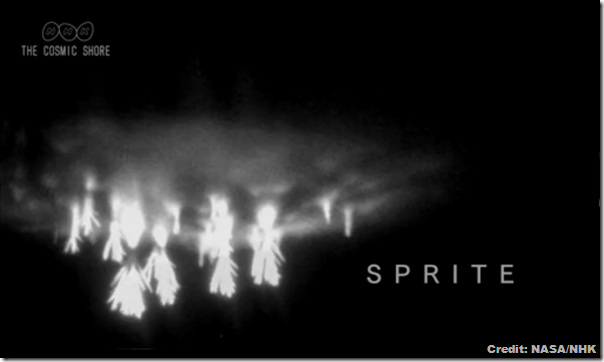
Sprites are reddish, ultrafast bursts of electricity that are born near the edge of space, about 50 miles (80 kilometres) up in the atmosphere.
For a long time, pilots claimed to see them, but few believed them until scientists accidentally captured images of sprites dancing above thunderstorms in 1989.
They flicker in and out of existence so quickly they are very difficult to catch on camera - until now.
Video: Rare Lightning Sprites Caught On Camera
Source: Our Amazing Planet
A group of researchers, along with help from Japan's NHK television, sought them out regularly for two weeks in the summer of 2011. Filming at 10,000 frames per second on two separate jets, the team recorded some of the best movies of sprites ever taken - movies that can be used to study this poorly understood phenomenon and the forces that create them, according to a NASA release.
By filming from two jets flying 12 miles (19 km) apart, the team mapped out the 3D nature of the sprites.
The basic understanding of sprites is that they are related to lightning, in which a neutrally charged cloud discharges some of its electricity to the ground. Normally, negative charge is carried from the cloud to the ground, but about 10 percent of the time it's a positive charge - and that leaves the top of the cloud negatively charged, which can produce sprites.
Sprites are usually blocked from view on the ground by the very clouds that produce them. They send pulses of electrical energy up toward the edge of space - the electrically charged layer of the atmosphere known as the ionosphere - instead of down to Earth's surface.
They are often jellyfish-shaped, starting as balls of light that stream downward. Red sprites can extend 12 to 19 miles (20 to 30 km) up into the atmosphere.
Top image: This still from a video released by NASA shows rare sprite lightning as seen by Japan's NHK Television. The video was filmed at a mind-boggling 10,000 frames per second. Source: Space.com.
No comments:
Post a Comment
Please adhere to proper blog etiquette when posting your comments. This blog owner will exercise his absolution discretion in allowing or rejecting any comments that are deemed seditious, defamatory, libelous, racist, vulgar, insulting, and other remarks that exhibit similar characteristics. If you insist on using anonymous comments, please write your name or other IDs at the end of your message.